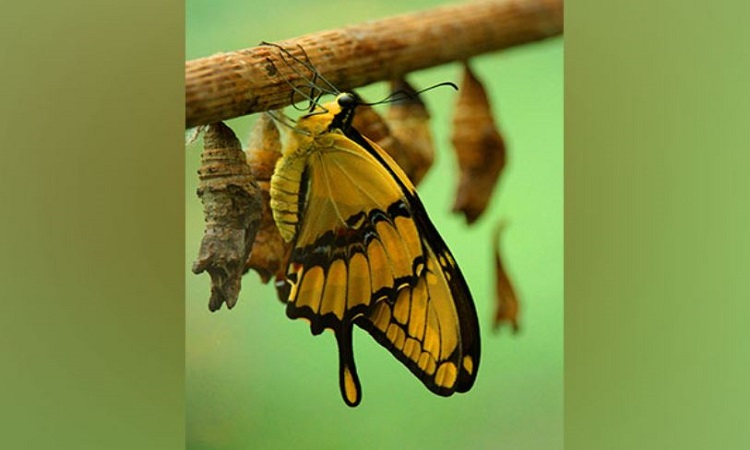Research reveals Butterflies, moths share ancient ‘blocks’ of DNA
According to new research, butterflies and moths share "blocks" of DNA that are more than 200 million years old. Read further on Dynamite News:

Washington DC: According to new research, butterflies and moths share "blocks" of DNA that are more than 200 million years old. Scientists from the Universities of Exeter (UK), Lübeck (Germany) and Iwate (Japan) devised a tool to compare the chromosomes (DNA molecules) of different butterflies and moths.
They found blocks of chromosomes that exist in all moth and butterfly species, and also in Trichoptera – aquatic caddisflies that shared a common ancestor with moths and butterflies some 230 million years ago.
Moths and butterflies (collectively called Lepidoptera) have widely varying numbers of chromosomes – from 30 to 300 – but the study’s findings show remarkable evidence of shared blocks of homology (similar structure) going back through time.
“DNA is compacted into individual particles or chromosomes that form the basic units of inheritance,” said Professor Richard ffrench-Constant, from the Centre for Ecology and Conservation on Exeter’s Penryn Campus in Cornwall.
Also Read |
Social media helping to protect biodiversity: Study
“If genes are on the same ‘string’, or chromosome, they tend to be inherited together and are therefore ‘linked’.
“However, different animals and plants have widely different numbers of chromosomes, so we cannot easily tell which chromosomes are related to which.
“This becomes a major problem when chromosome numbers vary widely – as they do in the Lepidoptera.
“We developed a simple technique that looks at the similarity of blocks of genes on each chromosome and thus gives us a true picture of how they change as different species evolve.
Also Read |
Butterflies might lose spots as climate warms
“We found 30 basic units of ‘synteny’ (literally meaning ‘on the same string’ where the string is DNA) that exist in all butterflies and moths, and go back all the way to their sister group the caddisflies or Trichoptera.”
Butterflies are often seen as key indicators of conservation, and many species worldwide are declining due to human activity.
However, this study shows that they are also useful models for the study of chromosome evolution.
The study improves scientific understanding of how moth and butterfly genes have evolved and, importantly, similar techniques may also provide insights about the evolution of chromosomes in other groups of animals or plants. (ANI)
 Dynamite News
Dynamite News 